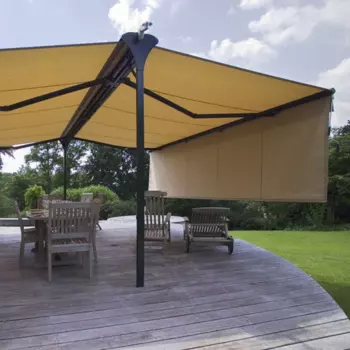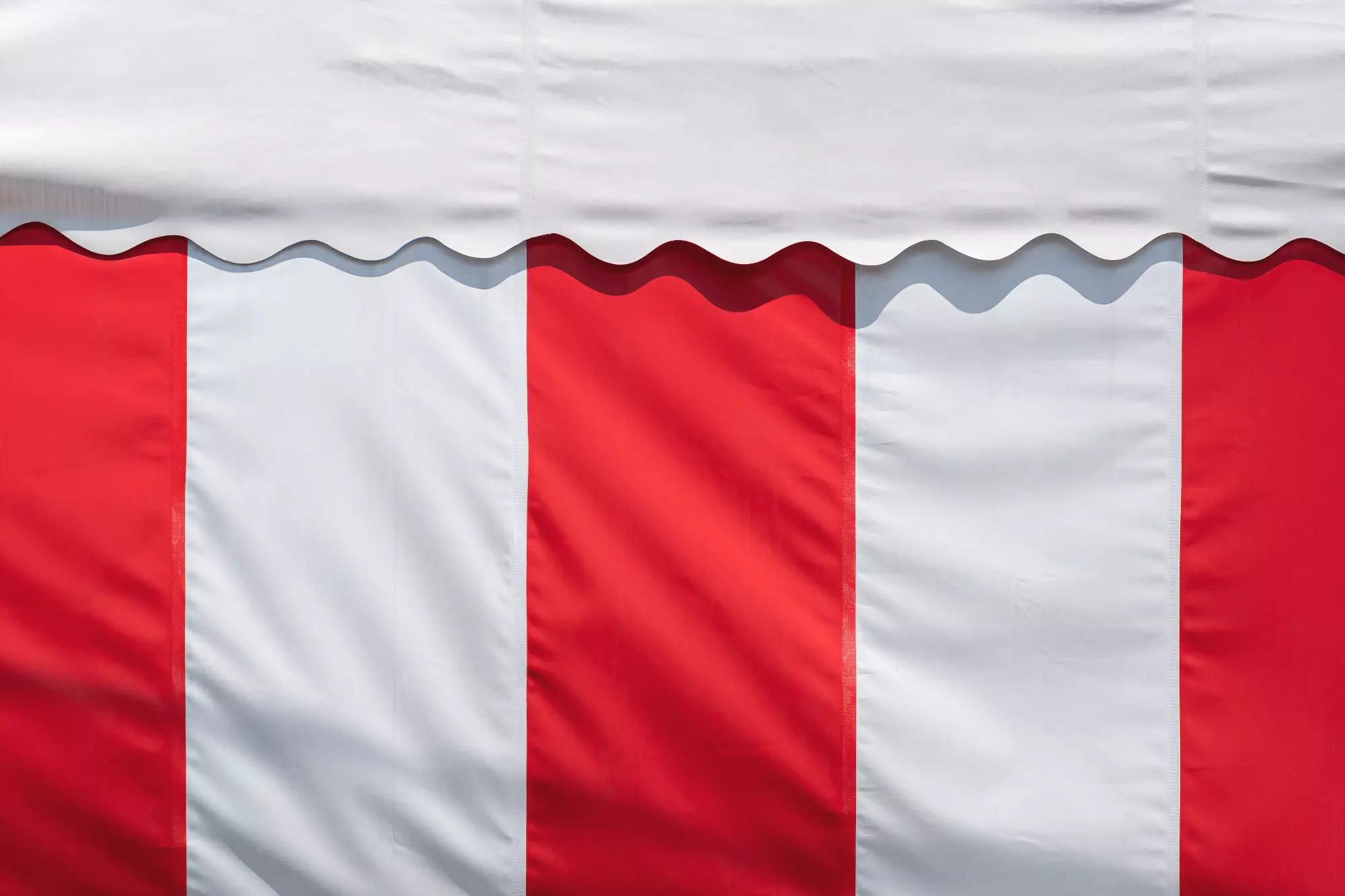If you want to buy an awning or, on the contrary, make your own, you may not know much about which fabric is best suited for making it, which is why we bring you the 3 best fabrics for awnings.
You may have some doubts, not only about durability, resistance and how to care for it, since awnings have a similar function to umbrellas, they are constantly exposed to the sun, rain and cold, so it must be of good quality. quality and durability. Among the most used fabrics for awnings we have polyester, microperforated and acrylic fabrics.
But before giving you these details, it is important that you know some details
HOW TO SELECT FABRIC FOR AWNINGS?
In order to choose the best awning fabric, it is very important to take some points into consideration, such as:
- Type of use
- Climate
- Location
If it is in a very hot area, it will be outdoors and used permanently, it may directly affect the quality of the awning. Therefore, before choosing the fabric, we must know these details.
DURATION OF THE AWNING CANVAS
The durability of an awning depends on where it is located, if it is constantly under the sun or in a very salty climate like the beach, surely the durability will not be the same as elsewhere.
But in general terms and thinking about quality, an awning canvas has a useful life of 5 years, but there are canvases that last up to 20 years. Other issues that can affect its durability are the type of care applied.
CARE OF AWNING FABRIC
To clean the awning you have to consider some points such as:
- Brushing: even if the awning does not have visible stains, it is important to brush it with a brush from time to time to remove dust from the structure and the fabric itself. If it is not done periodically, there may be a risk of damage to the protection system.
- Deep cleaning: if the awning already has stains it is important to wash it, to do this you will use cold or warm water, a brush and soap that does not contain detergent or bleaching products as they can remove the color from the fabric.
- Drying: it is never good to collect or store the damp awning, therefore, after you wash it you should let it dry in the open air to remove any traces of moisture.
- Closing the awning: this is one of the moments where we can break it or damage the fabric, so it should be done carefully or call professionals.
FABRICS FOR AWNINGS
Acrylic fiber
Acrylic has its beginnings in 1893 in Germany and its basic composition was widely used in carpets and clothing.
It is one of the most precious fabrics in the textile world. It is made from acrylonitrile, a fundamental part of this fabric. Its resistance is not that strong, but for everyday use it has good durability.
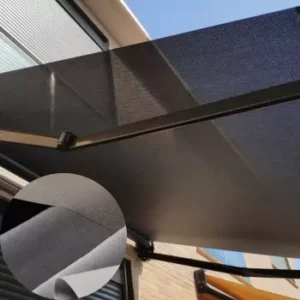
Advantages of its uses
- It is resistant to sunlight, which means it fades less easily.
- Resists chemicals when washed.
- Moths do not eat the material and fungi or bacteria are not created.
- Does not wrinkle
- Easy drying
Microperforated fabric
This fabric is ideal for regulating sunlight, being a perfect and durable thermal insulator. It originates from polyester or glass fiber and is coated with PVC; which makes it a resistant fabric, easy to clean and maintain.
Due to its small holes, it allows air to pass through, which prevents tears. Thanks to its structure, it can be used to print an image.
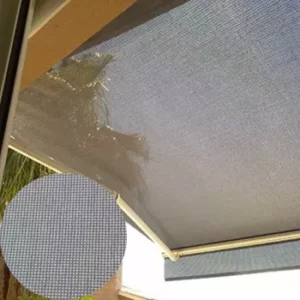
Advantages of its uses
- Thermal regulation and air circulation: maintains the temperature in its internal part.
- Provides lighting: you can take advantage of sunlight without affecting the quality inside.
- Design: a wide variety of colors are available and if desired it can be decorated with images.
Disadvantages of its uses
- This type of material is more expensive than most.
- It is a very heavy fabric, difficult to manipulate.
- Due to its perforation, it allows rain to pass through.
- Waterproof tarpaulin or PVC tarpaulins
Waterproof tarpaulin or PVC tarpaulins
This fabric is made of a polyester fabric. In addition to being used for awnings, they are used to cover boats, cover swimming pools and much more.
PVC tarpaulins weighing between 800 to 900 g are made for trailer or truck awnings, construction or waterproofing of reservoirs. Those of 600 to 700 gr are excellent for covering swimming pools, protecting playgrounds, among others.
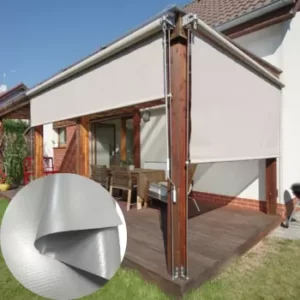
Advantages of use
- Waterproof
It has high resistance - Flexibility
- Insulating
- Recyclable
Disadvantages of use
- Does not facilitate air circulation
- It is flammable because it is derived from petroleum,
- It can be damaged if not maintained.
- Types of awnings
invisible arms
TYPES OF AWNINGS
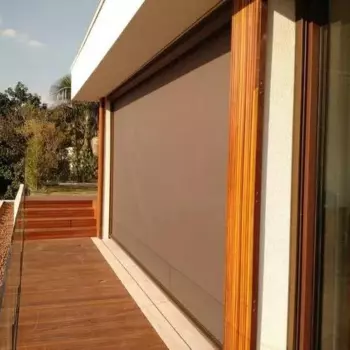
Cortina-store
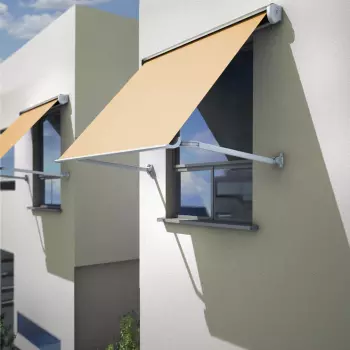
Straight Point
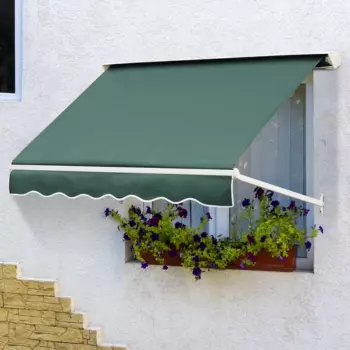
Balcony
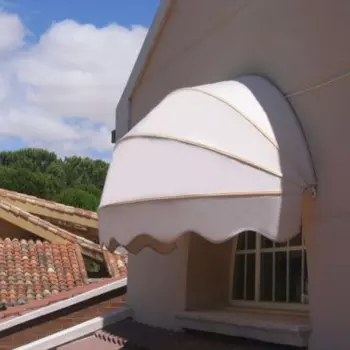
Hoods
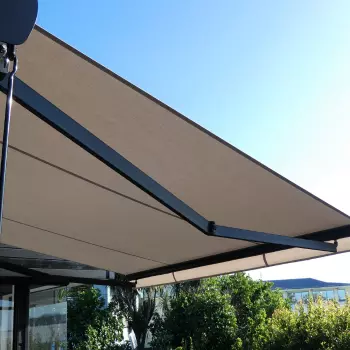
Monobloc
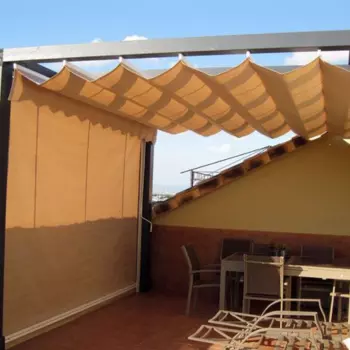
Pergola Sliding
